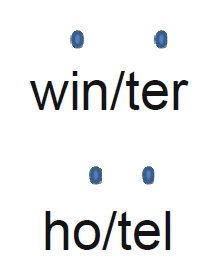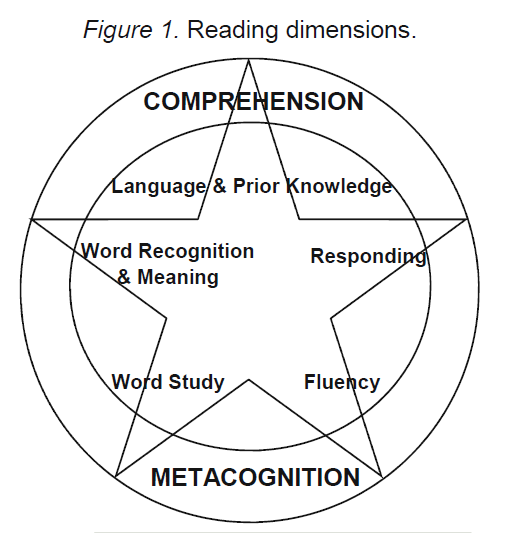Designing Interventions: The Chicken or the Egg
Designing Interventions: The Chicken or the Egg
By Donni Davis-Perry.
September/October 2014
The classic chicken-and-egg debate plays out in classrooms as teachers determine the academic areas in which their students require immediate support. In addition, teachers must establish the relationships among their students’ multiple learning needs. So, which should come first – the student’s difficulty with passage comprehension or the student’s deficit in accurate decoding? What is the relationship between comprehension and decoding skills? The first skill on which the teacher chooses to focus is critical when designing effective interventions.
When teachers correctly prioritize student skill needs, they get the “biggest bang” for their effort. For a student who struggles with reading comprehension, for example, the teacher may decide to design an intervention that targets comprehension strategies alone or to investigate what reading dimension(s) may be impacting comprehension (see Figure 1). To illustrate, Nathan, a fifth-grade student, receives low scores on reading comprehension assessments. Ms. McKenzie, his teacher, begins to investigate possible reasons for his low scores. She conducts an instructional assessment and, after analyzing the results, decides to implement an intervention that targets Nathan’s comprehension skills. His baseline data indicate that, when he summarizes a reading passage, he includes one detail, but does not include accurate character or setting information.
|
Reprinted from “Training in Instructional, |
Ms. McKenzie sets a short-term goal for Nathan:
In four weeks, after reading a short passage, Nathan will provide three details and accurate character and setting information about the passage.
Ms. McKenzie and Nathan then design an intervention that requires him to:
- Stop frequently during reading,
- Ask himself questions about the passage, and
- Write his answers on sticky notes (Gravois et al., 2011).
While reading, Nathan will ask himself authentic questions:
- Where does this story take place?
- Who is the main character?
- Why is this character important to the story? and
- What will happen next?
Nathan practiced this intervention daily during his reading group, and, each Friday, Ms. McKenzie and Nathan collected data and graphed his progress. After four weeks of the intervention, data indicated that Nathan’s reading comprehension had improved. He was able to retell a passage with three details and provide accurate character and setting information. Ms. McKenzie and Nathan were delighted that he had reached his short-term goal, but they decided to continue using the strategy and to write interim and long-term goals for increasing Nathan’s reading comprehension to grade-level expectations.
Ms. McKenzie noticed that Nathan was able to apply the strategy and make gains when using a short passage written at his independent reading level, which was below grade level. In a different scenario, using the same example, Ms. McKenzie hypothesized that there was a relationship between Nathan’s struggle with reading comprehension and his difficulty with decoding words. When Nathan read a passage, he stopped frequently when he came to an unknown word. He attempted to decode the word letter-by-letter but often, especially when he did not recognize sight words, he was unable to blend the sounds to read words. In this scenario, the selected intervention included word study strategies. Nathan was taught and used the Word Search Strategy. Before reading the passage, this strategy required him to:
- Scan the passage,
- Circle unfamiliar words, and
- Ask the teacher or another student for help reading unknown words (Gravois et al., 2011).
He also used the Pocket Words Strategy, consisting of the following steps:
1. Write unknown words on a small index card.
2. Keep the cards in a pocket.
3. Review the words at least three times each day.
4. Repeat reviews until the words are recognized automatically.
5. Keep no more than three new words in his pocket each day.
6. Once the word is learned, replace the card with a new unknown word.
7. Repeat steps 1-6. (Gravois et al., 2011).
The third strategy implemented by Nathan and Ms. McKenzie was Spot and Dot. “The purpose of this strategy is to enhance students’ accuracy in decoding polysyllabic words by providing a metacognitive approach to breaking apart large complex words” (Gravois et al., 2011, p. 85). Spot and Dot requires the student to:
- When a word from a passage is unfamiliar, “spot” the vowels in the word.
- Place “dots” over the vowels.
- Count the consonants between the vowels.
- If there are two consonants, divide the word between the consonants and sound out the word.
- If there is one consonant between the vowels, break the word after the first vowel to sound it out.
For example:
As in the first scenario, Ms. McKenzie and Nathan assessed his skills and collected data each Friday. Nathan read passages at his independent reading level and provided a summary of what he read. Although they were not implementing reading comprehension strategies, they continued to use reading comprehension as a measure of increased proficiency with word study. Nathan was able to meet his short-term goal of retelling the passage with three details and accurate character and setting information. With continuous implementation of these strategies, they were quickly able to increase the readability level of the passages used during reading group and for Friday assessments. As a result, Nathan’s comprehension and reading levels increased, and he was transferring the skills to other content-level reading material.

Regardless of what comes first – the chicken or the egg, comprehension or decoding – teachers are faced with teaching students who continue to struggle. Facilitating teaching and learning in strategic ways creates time to remediate skills while continuing to provide meaningful access to grade-level curriculum. Exploring the relationships of content dimensions and investigating what gaps contribute to student achievement outcomes provides the necessary information to design effective interventions that result in student growth.
Gravois, T., Gickling, E., & Rosenfield, S. (2011). Training in instructional consultation, assessment and teaming book 2. Catonsville, MD: ICAT.
Resource
Doerries, D. (2002). Instructional assessment. Available from
http://education.wm.edu/centers/ttac/resources/considerations/index.php
